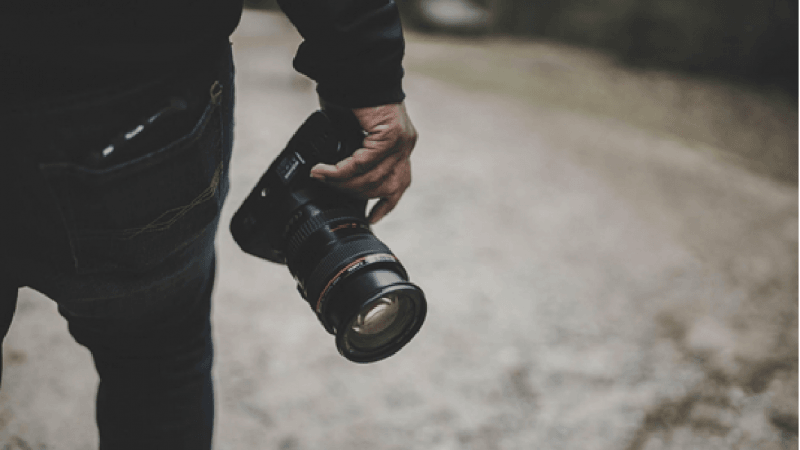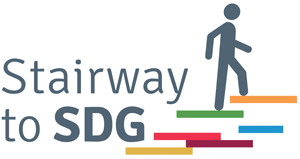Introduction

Everybody deserves to be seen (By @trevormbrown7 on unsplash.com)
|
As we know, the Human rights are rights inherent to all human beings, regardless of race, sex, nationality, ethnicity, language, religion, or any other status. Every person is entitled to these rights, without discrimination. Nowadays this theme is being addressed especially regarding themes like poverty, hunger, violence, racism. We aim at alerting and creating awareness to the new generations for these topics, and to promote an active voice in the students. Because we need to contribute to a well-informed youth so that peace prevails and social inequalities decrease. Starting from the Universal Declaration of Human Rights, we realize that some countries do not act in conformity, that’s why Human rights have become a central issue on the external agenda due, in large part, to the processes of globalization, which have brought with them a large number of problems in the context of a borderless world. This is important to think in an active way and promote youth participation in political life. As well as to create awareness for the social politics and problems of their hometown, city, and in the world. Since images have the power to transmit the subtlest of messages and trigger the strongest emotions, as it calls for the stimulation of creativity through the power of technologies, in order to work for the common good, this activity aims to create a solidarity contest to raise students' awareness on the subject of human rights through a photographic contest: it’s our time! |
Learning Objectives
- The learner understands the importance of the international human rights framework
- The learner is able to show empathy with and solidarity for those suffering from injustice in their own country as well as in other countries
- The learner is able to reflect on their role in issues of peace, justice, inclusion and strong institutions
- The learner is able to critically assess issues of peace, justice, inclusion and strong institutions in their region, nationally and globally
- Critical thinking competency
- Self-awareness competency
- Systems thinking competency
- Anticipatory competency
- Collaboration competency
Instructions
|
Step 1) Concepts and discussion (30 minutes) Is given a copy of the Human Rights Declaration to every student, as well a few minutes to read it. This is the first contact with the theme. The teacher explains, in a discussion-like lesson, so that learners are invited to intervene and express their remarks, concepts of
with the support of some videos and website number 1. The teacher provokes the class by asking what happens if institutions or human rights do not work or do not include everyone? In this way it can introduce a focus on excluded categories and vulnerable people such as the poor, those who suffer from hunger, refugees, homeless people and victims of violence or conflict. Step 2) Quest for local experts (30 minutes) The teacher asks the learners to do an online research, in groups, for a local organization/association committed to ensuring human rights for all citizens, especially those who suffer from injustices and are in vulnerable conditions. They should choose the institutions with the theme explained before that interest the students. In the best case scenario, the selected organization/association is located near the educational centre, so that it can be reached by walking. Once the class agrees on the selected organization, the teacher can contact it and schedule a visit. At this point the teacher announces to learners that they are challenged to create and organize a photo contest: photographs taken must be related to vulnerable situations like the ones described above (poverty, hunger, refugees, homelessness, violence). Step 3) Trip and photo shoot (180 minutes) Learners and teachers leave the educational centre, go to visit the selected association committed to ensuring human rights and helping vulnerable people and take some pictures on the way before and after the visit. If allowed, students will take some pictures at the facility they chose to visit. The visit to the selected association is the perfect occasion to also take a trip around the city in order to shoot some pictures. Teachers and students can plan the trip together. The class must be divided into groups of 5 or 6 students. The group of students can take several photos related to the theme, but can only submit one photo for the contest. In the end a reflection/debriefing must be done. As way to understand the skills learned by this visit, the teacher could do some questions as: - How do you feel during the visit? - Do you understand the importance of Human Rights? - Have you seen cases that violate the declaration of Human Rights? - Can we relate what you see in this visit to the articles? - Take the Declaration of Human Right, read the arts. 23 and 24, Have you seen cases that violate these articles? - CALL TO ACTION Students should start preparing the photography contest. They must organize the space at the school and the places where the photos will be displayed. Together with the teacher, they must define the maximum number of photos to be included in the contest. The learners can choose 2 or 3 topics related to poverty, hunger, etc. They also can add a sentence to represent the picture. The students are also responsible for preparing the promotional campaign for the photographic contest: like posters and news online to put on the school page, creating an event on social networks, etc. A simple regulation must be decided, for example the theme of the photographs that will be exhibited, the purpose of the contest (raising awareness). Here it will be also important to begin to define who will be the jury. It might be interesting to invite people who represent associations. It’s intended with this contest that each person who visits the exhibition should contribute with a donation of goods for a welfare/charity association. At the end of the school year, a photographic exhibition is held. A winner is chosen and the goods collected are distributed to the associations. |
Notes for Educators
Estimated Total Duration: 4 hours + Call to Action
- How to introduce the Activity
Tips per phases:
Step 1: the teachers should talk about the theme of human rights and try to create empathy with the vulnerable people and show them support regardless of their appearance, story and status. As well explain to them that the school is concerned with the well-being and in building healthy and responsible human beings. It’s also important to encourage the students to work together as a way of sharing knowledge and self-help strategies. One person's experience can be the alert for another. It is up to the teacher to divide the class following the instructions above or a different one that can suit best to the numbers of the class.
Step 2 and 3: the teacher must help the students on the trip organization (like: Red Cross, Amnesty International, Human Rights Watch, OHCHR, Human Rights Data Analysis Group) through their city in order to capture photos. It’s important to decide in which areas they can go to capture a situation related to the theme of the contest. Moreover, the teacher must help the students in contacting welfare/charity associations oriented towards the practice of human rights. Also the teacher must give some orientations of the way they capture the photo. The students need to understand empathy and the way they can relate with each other.
Call to Action: the teacher must help the students preparing the photography exhibition. They must organize the space at the school and the places where the photos will be displayed and supervise promotional campaigns. The teacher must also be present at the exhibition and in disturbing the goods.







